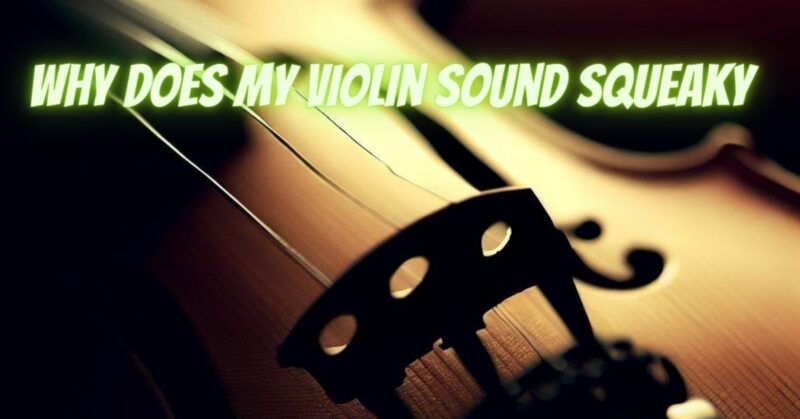As a passionate violinist, there’s nothing quite as disheartening as producing a squeaky sound when playing your cherished instrument. The violin’s enchanting tones are meant to evoke emotions and captivate audiences, but that squeak can leave you feeling frustrated and perplexed. Fear not, for we are here to shed light on this perplexing issue. In this article, we will explore the reasons behind that squeaky sound and offer insights into how you can overcome it, allowing your violin to once again sing with clarity and beauty.
Unveiling the Culprits:
- Bow Pressure and Speed: One of the primary culprits behind a squeaky violin sound lies in improper bow technique. Applying excessive pressure or insufficient speed can lead to the bow slipping or bouncing off the strings, causing an unwanted high-pitched noise. Achieving a balance between proper pressure and controlled speed is crucial to producing a smooth and resonant tone.
- Bow Placement and Angle: The position and angle of the bow on the strings greatly influence the sound produced. If the bow is too close to the bridge, it can result in a screechy, piercing sound. On the other hand, positioning the bow too close to the fingerboard can cause a dull and muted tone. Finding the sweet spot, approximately halfway between the bridge and fingerboard, allows for optimal sound production.
- Rosin and Bow Hair: The condition of your bow hair and the amount of rosin applied can significantly impact the sound quality. Overuse of rosin or using low-quality rosin can create excessive friction, leading to a squeaky sound. Similarly, worn-out bow hair may lack the necessary grip on the strings, resulting in a less resonant tone. Regularly rehairing your bow and using high-quality rosin appropriate for your climate can help eliminate squeaks caused by these factors.
- Instrument Maintenance: Neglecting regular maintenance of your violin can contribute to squeaky sounds. Loose or worn-out fittings, such as the chinrest, tailpiece, or fine tuners, can cause vibrations and rattling noises that interfere with the clarity of the sound. Ensure that all components are properly adjusted, and the strings are correctly seated in the bridge and nut to prevent unwanted vibrations and squeaks.
Overcoming the Squeak:
- Bow Control and Technique: Take the time to refine your bowing technique by seeking guidance from a qualified violin teacher. Practice exercises that focus on pressure control, bow speed, and proper bow placement to develop a consistent and refined sound.
- Rosin and Bow Maintenance: Experiment with different rosins to find one that suits your playing style and climate. Regularly clean your bow hair with a soft cloth to remove excess rosin buildup, which can affect sound quality. Ensure your bow is rehaired when necessary to maintain optimal performance.
- Instrument Setup and Maintenance: Consult a luthier or violin expert to ensure your instrument is set up correctly. They can address any issues with fittings, adjust the soundpost, and make sure the strings are properly seated. Regularly maintain your violin by keeping it clean, using the appropriate humidifier in dry conditions, and seeking professional maintenance when needed.
Conclusion:
A squeaky violin sound can be a frustrating obstacle for any violinist, but with proper technique, maintenance, and attention to detail, it can be overcome. Remember to focus on bow control, utilize the correct amount of rosin, and maintain your instrument diligently. By addressing these factors and seeking guidance from professionals, you can rediscover the true beauty of your violin’s sound. Embrace the challenge, practice diligently, and soon enough, your violin will sing with clarity, warmth, and enchantment, captivating both yourself and your listeners.


